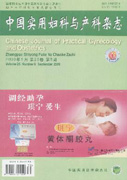Abstract:Submucosal myoma is the main gynecological disease, which urges women at reproductive age to seek clinical treatment, because it is more likely to affect women's menstrual cycle and pregnancy due to its special growth pattern. With the development of endoscopic techniques, transcervical resection of myoma (TCRM) has replaced traditional laparotomy and laparoscopic surgery, and has become the standard treatment method for submucous myoma. A comprehensive understanding of submucosal myoma, and accurate grasp of the indications, perioperative management principles and surgical skills of TCRM are the keys to ensure the safety and success of the surgery. This paper focuses on the classification ofsubmucous myoma, the indications of TCRM, perioperative preparation, surgery steps and skills, treatment effects and operation notes of TCRM.

